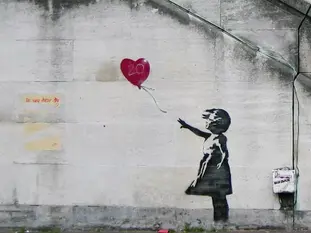
Unraveling the Wonders of Art History: A Fascinating Journey of Creativity and Culture
Aug 14, 2024
3 min read
0
5
0
Art history stands as a magnificent tapestry, weaving together the threads of human creativity and cultural evolution. Delving into the realms of artistic expression unveils a treasure trove of stories, techniques, and emotions that have shaped societies throughout the ages. Join us as we embark on a thrilling exploration of the captivating world of art history, where every brushstroke carries a narrative, and every sculpture echoes the whispers of the past.
So, What Exactly is Art History?
Art history is not merely a study of paintings and sculptures; it is a multidimensional reflection of human ingenuity and imagination. By scrutinizing artworks from different periods and regions, art historians decode the visual language of artists, revealing insights into political climates, social values, and personal beliefs of bygone eras. Through the lens of art history, we gain a profound understanding of how art serves as a mirror reflecting the soul of humanity.
Why Is Art History Essential for Education?
Embracing art history in educational curricula is pivotal for nurturing well-rounded individuals. By immersing students in the diverse landscape of artistic movements and genres, educators cultivate critical thinking, empathy, and cultural awareness. Art history transcends the boundaries of time and space, fostering a deep appreciation for the richness and diversity of global cultures. Moreover, studying art history nurtures creativity and hones visual literacy skills, empowering individuals to communicate complex ideas through visual means.
Exploring the Evolution of Art Movements
1. Renaissance Art: The Rebirth of Innovation

The Renaissance era witnessed a seismic shift in artistic techniques and philosophies. From the iconic works of Leonardo da Vinci to the exquisite sculptures of Michelangelo, Renaissance art celebrated humanism, classical ideals, and technical mastery, leaving an indelible mark on the art world.
2. Impressionism: Capturing Moments in Time

Impressionist artists such as Claude Monet and Vincent van Gogh revolutionized the art scene with their bold brushstrokes and innovative approach to light and color. By capturing fleeting moments and atmospheric effects, Impressionism paved the way for modern art movements.
The Intersection of Art and Society
Art history serves as a potent lens through which we examine the interplay between art and society. From propaganda art during wartime to contemporary installations sparking social change, artworks have the power to challenge, provoke, and inspire. By studying the socio-political context of art, we unravel the intricate relationships between artists, audiences, and the world at large.
Conclusion: Why Art History Matters
In a world brimming with technological advancements, the study of art history reminds us of our shared humanity and enduring artistic legacy. It beckons us to ponder the existential questions, marvel at the beauty that surrounds us, and contemplate the intricacies of the human experience. As we traverse the vast landscape of art history, we uncover a kaleidoscope of perspectives, emotions, and stories that enrich our lives and deepen our connection to the world around us.
So, let us embrace the enchanting journey of art history, where each masterpiece becomes a portal to the past, present, and future—a timeless testament to the boundless creativity of the human spirit.
Art history is not just a subject; it is a testament to the evolution of human civilization, a window into the soul of society, and a mirror reflecting the beauty and complexity of the world.
By delving into the colorful tapestry of art history, we not only enrich our minds but also nourish our souls with the enduring beauty and wisdom encapsulated in every stroke of the brush and chisel. Let us embark on this illuminating journey together, where the canvas of history unfolds before our eyes, revealing the profound legacy of artistic expression that has shaped our world.



